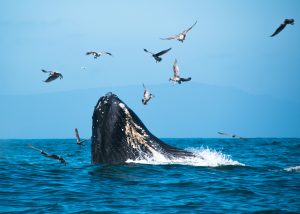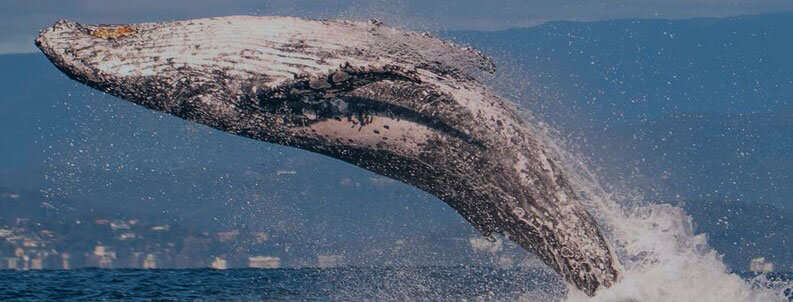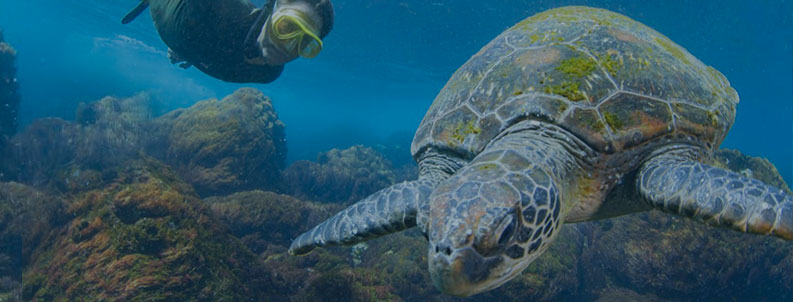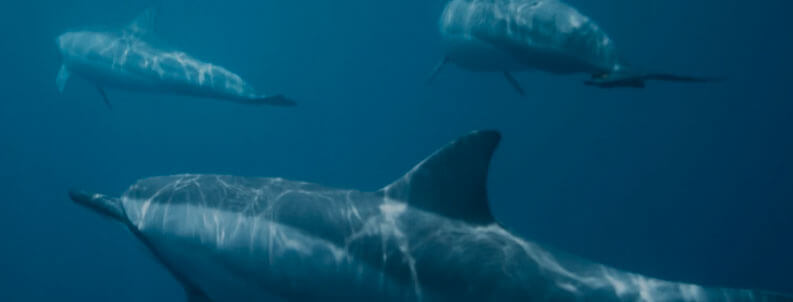Questions regarding a whale’s vision and their ability to see like us has always been up for debate. The general consensus is that yes, whales can see with their eyes, but depending on the species, some whales do see better than others. Most whales are even thought to be color blind, but that doesn’t change the fact that when we swim up next to them while diving or snorkeling, they know exactly where we are and the shapes that we make.
Closely studying and swimming with whales has helped us garner a better understanding of them. We have learned that eyesight for whales is less important than their other senses when it comes to their experience of the world and immediate environment.

Instead, some whale species rely on their special ability of echolocation to measure distance, danger, identify objects, and communicate, which helps make up for having a compromised or not so advanced or developed vision because of their highly attuned and phenomenal use of sound. Toothed whales, such as sperm whales and orcas, as well as dolphins, use echolocation specifically for hunting and navigating.
Interestingly enough, Baleen whales, such as humpback and blue whales, use other methods for communicating. Blue Whales produce a high-frequency series of sounds, called ‘songs’, to communicate, whereas Humpback whales are thought by scientists to not have vocal chords, so instead, pinch their nostrils together to produce those majestically haunting sounds.
Typically, whales who travel and spend most of their time deep underwater don’t need fantastic eyesight, so they are evolutionarily gifted with excellent hearing, use of sound or echolocation instead. According to scientists, whales in comparison to human standards undoubtedly have a much poorer vision. A whales’ difference in retina composition affects their ability to perceive colors and distance the same way other mammals do.
For example, with our experience of studying and researching Humpback Whales closely in the Gold Coast, it is believed that Humpbacks have a special cornea that allows them to see just as well above the water as below. It is also believed that they can see blue and green hues, but we are still unsure as to their perception or vision when it comes to the other myriad of colours.
It is nearly impossible for us to fully understand or measure exactly what each whale species, let alone each whale, does see with their eyes; however, based on scientific findings on the anatomy of their retina, photoreceptors, ganglion cell densities, etc., we can safely conclude that there are very evident limitations on the cetacean visual system. Nevertheless, they are fantastic creatures that deserve much of our understanding, continued research and preservation efforts.
So please, join us for a very special and educational opportunity of seeing these majestic creatures up close in the wild by booking a “Whale Watching” or “Swimming With Whales” experience with Cooly Eco Adventures today! Learn more about these awe-inspiring marine mammals, one fact at a time, while enjoying the beautiful backdrop the Gold Coast has to offer!


